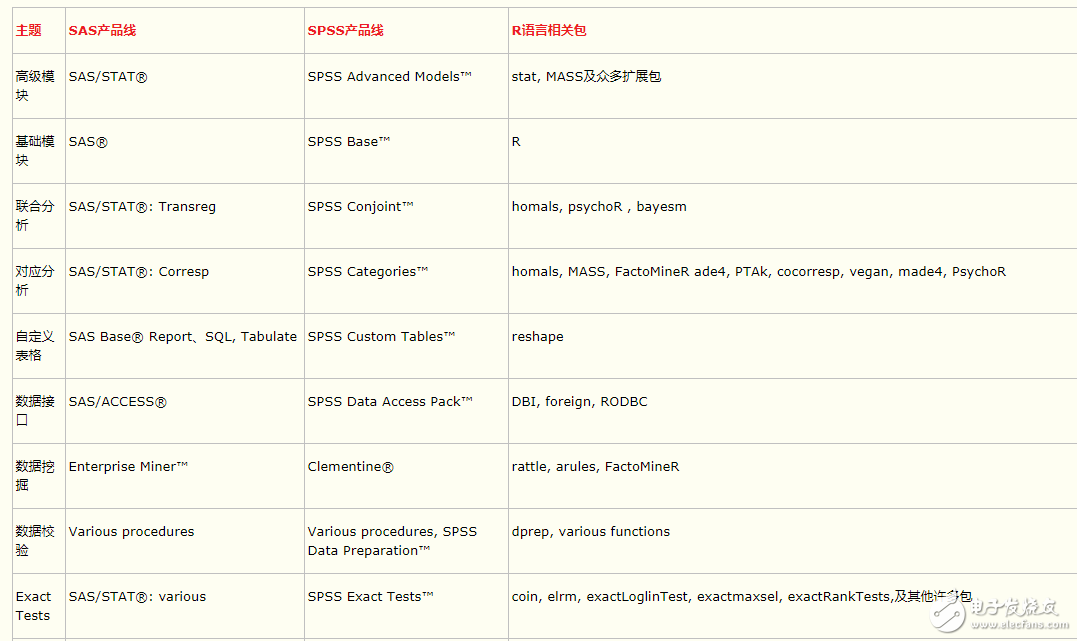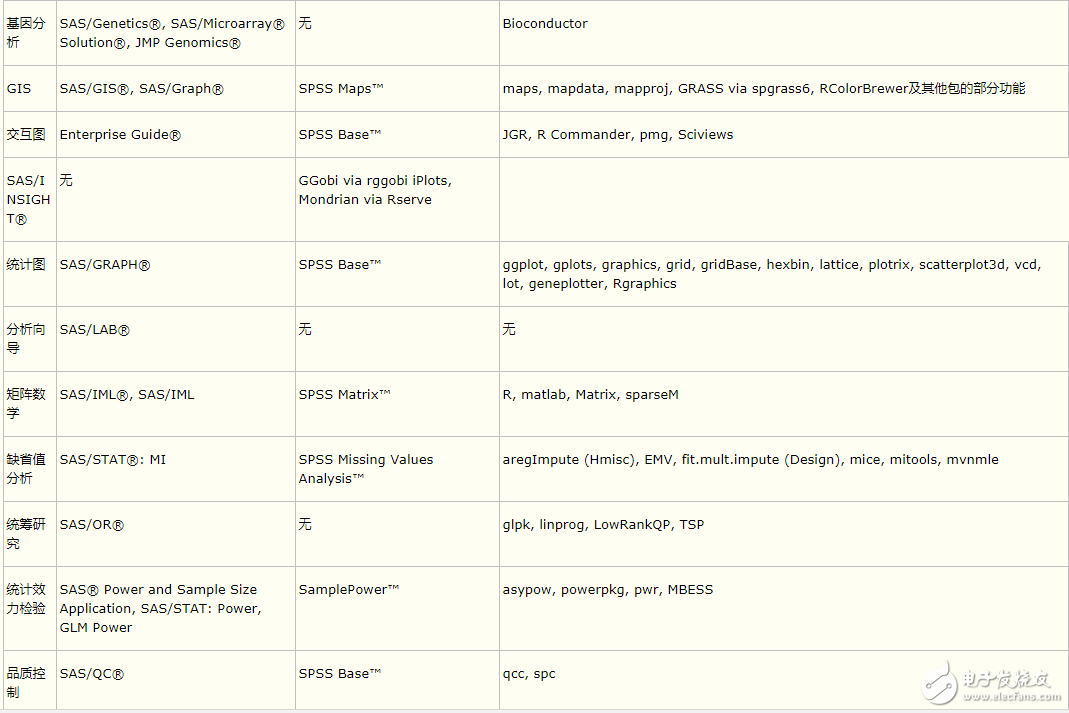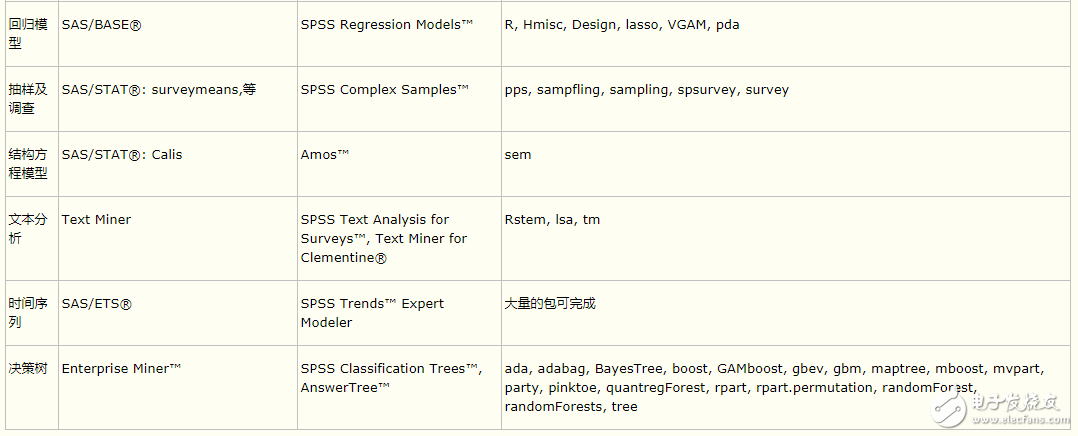There are many softwares and programs that can be used for statistical analysis. Currently, the applications are widely used: SPSS, SAS, R language, Matlab, S-PLUS, S-Miner, etc. Let's take a look at the features of each application:
SPSS: The simplest is menu operation, but it is not conducive to secondary program development.
SAS: Need to buy, the software to enter the language should be very accurate, can not be wrong, difficult to operate.
R language: free software, menu operation, but generally programming, secondary program development.
Matlab: Basically, the program operation is similar to the R language, but the function is relatively powerful.
S-PLUS: Need to buy, basically also menu operation, similar to SPSS.
r language and spss which is good to learn _R compared with SPSS, SAS
Compared with SPSS and SAS, R has outstanding advantages:1) The product line is complete. In terms of functionality and product line, it has far exceeded SPSS, and is comparable to SAS. Some R packages, such as the Bioconductor commonly used in genetic analysis, have far exceeded commercial software in many functions such as online gene database connectivity.
2) Free. Please note that software marked as TM or ® symbol is required to be purchased separately on the basis of the SPSS and SAS base modules, and the cost is often more than $1,000. And all the features of R are free.
3) Open. Since R itself is a statistical language environment, new statistical models can be implemented very quickly, so there are no ready-made statistical software packages for the functions used in many structural measures such as structural equation modeling, project response theory, and cognitive diagnosis. With R you can write your own algorithm. Similarly, since R is completely open source, we can quickly write algorithms that are better suited to our situation based on algorithms that researchers have developed.
Table: Comparison of R with SAS and SPSS



Spss user requirements are as long as you can click on the menu, there is a programming window but generally no one, users have received some statistical training, but do not need advanced analysis capabilities, market research uses more, statistics Professional sophomore general requirements.
Sas contains a lot of written procedures and are certified by Fda. There are guaranteed things, so the benefits of death are authority, the disadvantages are not flexible enough, the algorithm is slow to update, and the syntax is strange. It's not the language that makes programming in the traditional sense, so looping about what is involved in the algorithm will not be so convenient, nor is it a mathematical language like matlab, so mathematics is very troublesome, unless you buy the iml library, but because of authority, so The drug factory needs to use, and the bank's risk control will also be used. Sas also has the advantage of big data processing. The built-in proc sql is not bad, but to be honest, most people prefer to use mysql directly.
Next is R open source, so the update is very fast, the new theory can be used very quickly, data processing is particularly convenient, data frame listå•¥. The emergence of R solves the problem that many non-IT people need to face a lot of programming. If we sorted, should we start with the bubble algorithm? So at first it was said that R is a lite version of matlab, but after using it, I know that R is lighter and easier to learn, and open source is free. Not so much compatibility with Linux or Windows, R calls C can greatly improve the speed of the loop, monte carlo is simply an angel! In short, if you want to have your own ideas, that is, you need to program yourself, push R. So don't say that finance is not very popular now.
Finally, Python said that it is necessary to say that the data processing convenience of pandas is still not as good as R, but even if it is used to it, the advantage of python is that it can do a lot of things, not just statistics, so the application will be wider. Others I don't know, mathematical modeling is very similar to Matlab's syntax win32 module and office compatibility is great, both stand-alone and large-scale development.
In addition, when it comes to financial applications, many (more than R) quant departments will use python, and those who write C++ are mostly IT. The algorithms written by the mathematics department can't do it, and the mathematics department's C++ Not so good, so Python has a place to use.
In short, R and Sas are more professional statistical software, necessary for statistical students.
Spss is a more popular statistical software, doing some small problems such as questionnaire analysis, simple regression, python is not statistical software, but a language that can be used to do various things, stata is between spss and sas, Programming is extremely difficult.
In addition, only R and Python are open source, open source is not only free, but more importantly, it is developed by many people. So the new theory of new requirements can be put into practice quickly, but the risk is that there may be something wrong (but the error will be corrected soon). So if you want to be absolutely correct, use the paid, at least wrong, you can still go to court (by the way, revoluTIon R is a paid and guaranteed version of R). If you like more flexible, use open source. (By the way, octave, but I still don't like the syntax of the matlab series.) If you use very simple statistics or even don't understand statistics, use spss.
If you are just counting, or just working alone, use R, if you are a company to be a platform for everyone to use and work related to statistics, use python.
In fact, R can also even sql c c++ The key is to master one, then you will find that the other are clouds.
CCTV Power Adapter,Security Camera Power Adapters,CCTV Camera Power Adapter
Chinasky Electronics Co., Ltd. , https://www.chinacctvproducts.com